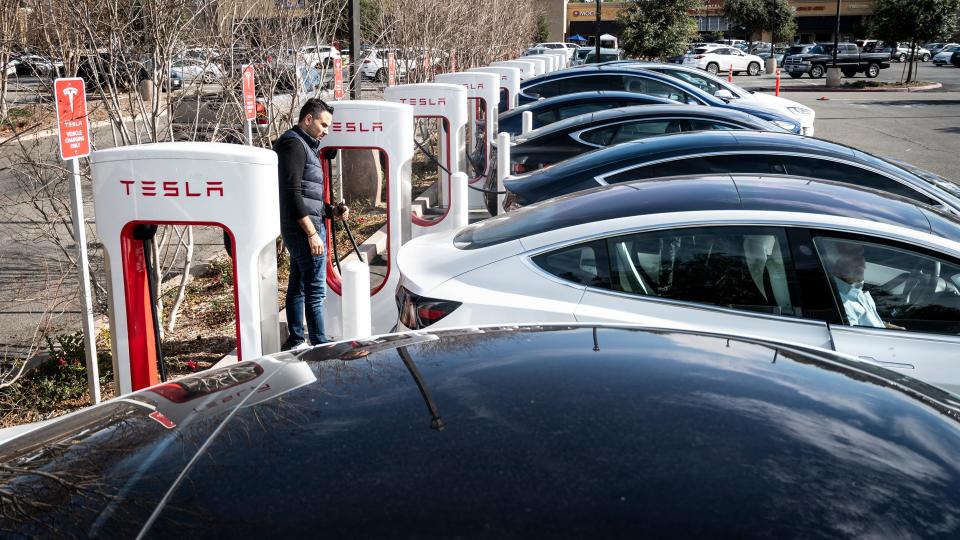EV chargers are too boring — and it's holding us back from electrifying the classic American road trip

Electric-vehicle drivers on road trips often don't have much to do while their cars charge.
Building charging hubs around attractions and amenities could improve the experience.
This article is part of "Transforming Business: Infrastructure," a series exploring the advancements reshaping US infrastructure.
There's a missed opportunity at most electric-vehicle charging stations.
As sales of battery-electric vehicles have increased in recent years, the automotive industry and federal and state governments have been racing to install more charging stations. But building a place to plug in is only the first step in changing the way people fuel their cars.
While the automotive industry has done a lot to reduce the amount of time you need to spend plugging in your car on a road trip, EV charging stops may never match the convenience of five-minute stops to fill your gas tank.
Charging stations themselves are also difficult to make money with. A solution: EV charging hubs decked out with restaurants, entertainment, shopping, and anything else that can occupy the hour or two you may need to get a full battery.
That's much like how a gas station works. An ancillary business built around a charging hub could fund the owner's bottom line more reliably than the fuel itself.
EVs need rest stops
We're not exactly reinventing the wheel here.
Many turnpikes and highways in the US have rest stops or travel centers with amenities that allow drivers to stay longer on the road when they need to stretch their legs. These rest stops are usually funded by tolls or other government-backed funding, which is a more complicated issue for EV charging.
Without any clear guidelines, there hasn't been much uniformity in what a charging station can — or should — look like, leading to a Wild West of different designs and locations. Without a clear way forward, there hasn't been much uniformity in what a charging station can look like.
Figures from the Department of Energy indicate that at the start of 2024, there were some 61,000 public charging stations in the US, more than double the number of stations in 2020. But many of these stations are tucked away on dealership lots or in otherwise empty parking lots.
These stations appear to affect EV adoption. Surveys have suggested that access to public charging infrastructure increases adoption.
But they've also suggested that EV drivers are unsatisfied with the charging experience.
EV charging stations need an overhaul
Tesla is experimenting with what a longer charging stop could look like.
Construction is underway in Hollywood on a Supercharger station that would double as a 24-hour restaurant and drive-in movie theater.
CEO Elon Musk floated the idea of a destination station like this in 2018, saying he wanted to build an "old school drive-in" at a Supercharger location in Los Angeles. In January, an NBC affiliate in Los Angeles reported, citing city documents, that the screens would project short films that occupy the roughly 30 minutes required to charge a Tesla.
The Supercharger station is also supposed to be an attraction of its own, designed to look like a 1950s drive-in and diner — a kitschy stop on a Hollywood road trip.
The design of these charging stations shouldn't just mimic convenience stores and quick-stop establishments. Charging can take a half hour to several hours, depending on the car and the type of charger. That's plenty of time to browse a gift shop, grab a bite to eat, or wander around a roadside attraction.
Read the original article on Business Insider

 Yahoo Autos
Yahoo Autos 